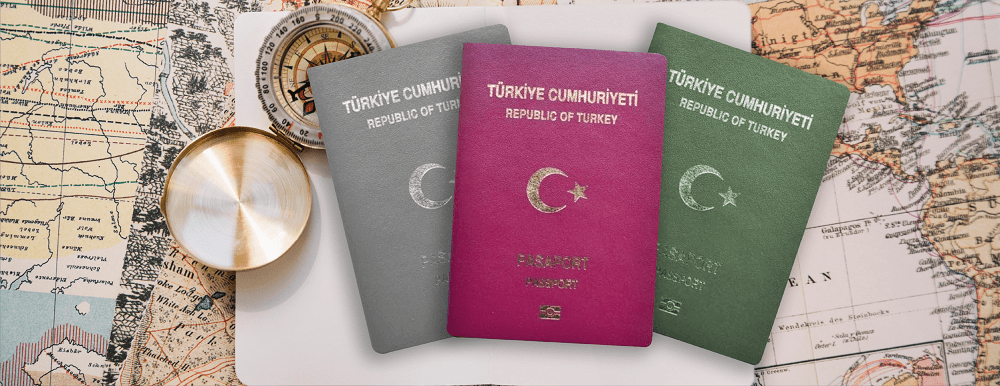A passport is an official travel document issued by a state to its citizens or, in some cases, to foreigners, allowing them to exit and enter a country. It serves as proof of identity and nationality and is used for border control and international travel.

Passports of Republic of Türkiye
Etymology
The word "passport" originates from the medieval Italian terms passa porto ("to pass the harbor") or passa porte ("to pass the gates"), referring to documents required for crossing city gates or harbors. The modern concept of passports became widespread as national identity and border security gained importance in the 19th and 20th centuries.
Historical Development
Early Examples and Historical Use
Passport-like documents have been used throughout history by various states and empires:
- 450 BCE: The Hebrew Bible mentions that Nehemiah received a letter from King Artaxerxes I to allow him safe passage through foreign territories.
- 3rd century BCE: The Indian political treatise Arthashastra describes entry and exit permits.
- Han Dynasty China (202 BCE – 220 CE): Passports (zhuan) were used to regulate movement within the empire.
- 12th century: In the Islamic Caliphate, a tax receipt (bara’a) functioned as a basic travel permit.
- Medieval Europe: King Henry V of England introduced a document in 1414 that resembled modern passports.
Emergence of Modern Passports
- 19th century: With the expansion of rail travel in Europe, passport regulations were relaxed.
- World War I (1914–1918): Governments reintroduced passport requirements for security and migration control.
- 1920: The League of Nations held the Paris Passport Conference, standardizing passport formats.
- 1980: The International Civil Aviation Organization (ICAO) established machine-readable passport standards.
- Since 1998: Many countries have adopted biometric passports for enhanced security.
Types of Passports
Although passport classifications vary by country, they generally fall into the following categories:
1. Ordinary Passport (Burgundy Passport)
- Issued to regular citizens for international travel.
- Valid for a period ranging from six months to ten years.
- Visa requirements vary by country.
2. Special Passport (Green Passport)
- Issued in Türkiye to certain government employees, retired officials, and public institution workers.
- Provides broader visa-free travel options.
3. Service Passport (Gray Passport)
- Granted to individuals traveling abroad on official government duty.
- Often exempt from visa requirements, though this depends on bilateral agreements.
4. Diplomatic Passport (Red Passport)
- Issued to high-ranking officials and diplomats.
- May grant diplomatic immunity and other privileges.
5. Passport for Foreigners
- Provided to stateless individuals or those whose citizenship status is uncertain.
- Serves as an international travel document.
6. Temporary and Emergency Travel Documents
- Issued when a passport is lost or stolen.
- Used primarily to facilitate an individual's return to their home country.
Contents and Technological Developments
Modern passports contain the following details:
- Full name of the bearer
- Date and place of birth
- Citizenship information
- Passport number
- Photograph and signature
- Pages for entry and exit stamps
To enhance security, many countries now issue biometric passports containing an embedded microchip with the holder’s fingerprint, facial recognition data, and a digital signature.
Legal Basis and Use of Passports
Passports are issued by a country's executive authority, typically under the supervision of the Ministry of Interior or Ministry of Foreign Affairs.
- Türkiye ’s Passport Law (Law No. 5682) defines passport types and regulations.
- International Law: Passports are recognized as valid travel documents under international agreements.

